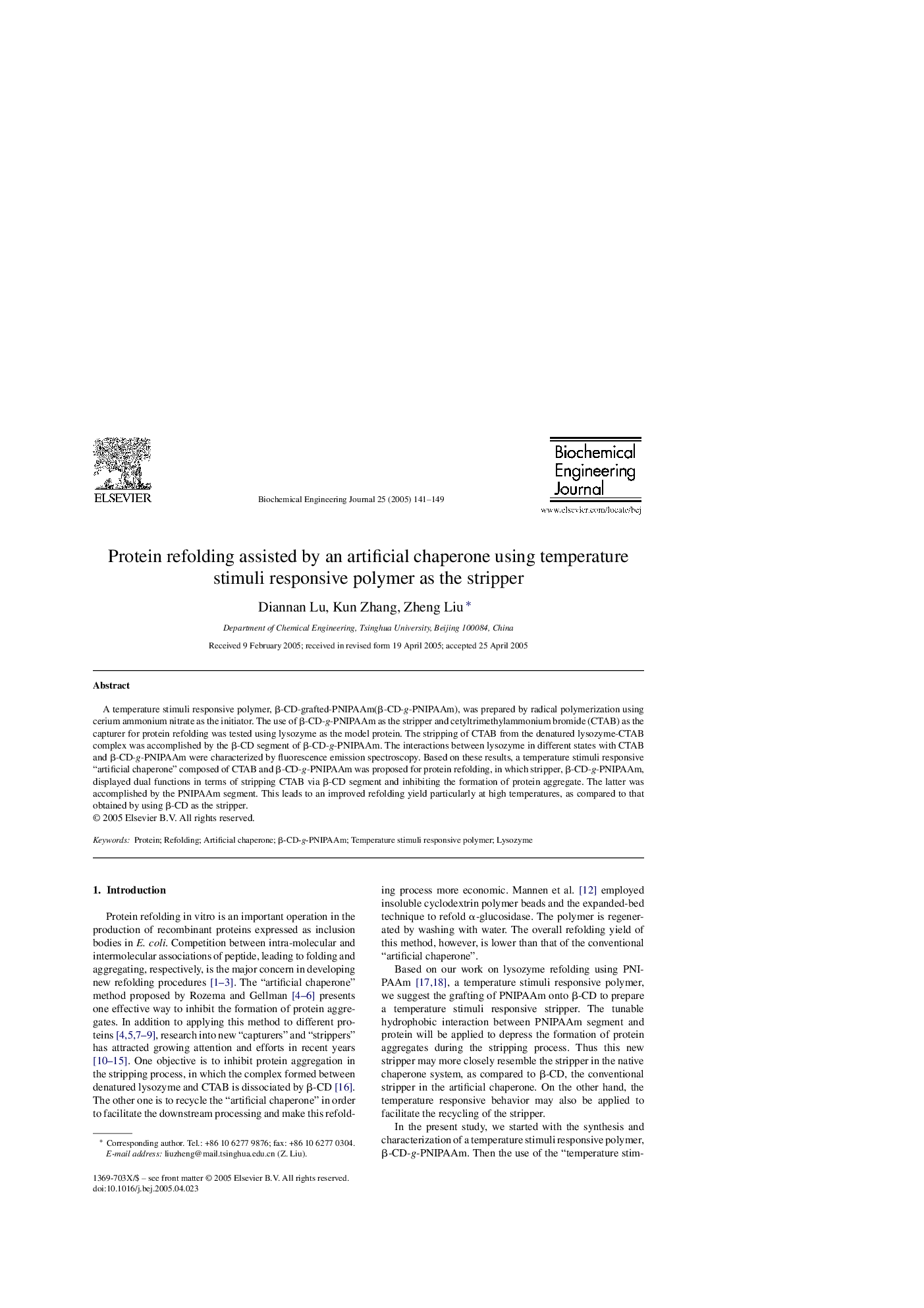| Article ID | Journal | Published Year | Pages | File Type |
|---|---|---|---|---|
| 10161186 | Biochemical Engineering Journal | 2005 | 9 Pages |
Abstract
A temperature stimuli responsive polymer, β-CD-grafted-PNIPAAm(β-CD-g-PNIPAAm), was prepared by radical polymerization using cerium ammonium nitrate as the initiator. The use of β-CD-g-PNIPAAm as the stripper and cetyltrimethylammonium bromide (CTAB) as the capturer for protein refolding was tested using lysozyme as the model protein. The stripping of CTAB from the denatured lysozyme-CTAB complex was accomplished by the β-CD segment of β-CD-g-PNIPAAm. The interactions between lysozyme in different states with CTAB and β-CD-g-PNIPAAm were characterized by fluorescence emission spectroscopy. Based on these results, a temperature stimuli responsive “artificial chaperone” composed of CTAB and β-CD-g-PNIPAAm was proposed for protein refolding, in which stripper, β-CD-g-PNIPAAm, displayed dual functions in terms of stripping CTAB via β-CD segment and inhibiting the formation of protein aggregate. The latter was accomplished by the PNIPAAm segment. This leads to an improved refolding yield particularly at high temperatures, as compared to that obtained by using β-CD as the stripper.
Related Topics
Physical Sciences and Engineering
Chemical Engineering
Bioengineering
Authors
Diannan Lu, Kun Zhang, Zheng Liu,
